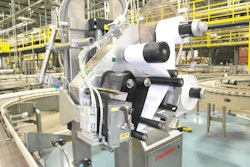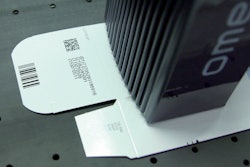1. Understand your distribution cycle. Understanding the distribution cycle for your packaging is extremely important. If you’re packing and shipping a refrigerated item, it will go through a cold chain consisting of freezers and refrigerators. If the ink and glue on the label isn’t designed for your distribution cycle, it is at risk of falling off. By the nature of your process, you may have different environments; the challenges can be made more complex by the packaging materials and containers themselves.
2. Know your legibility requirements up front. Ink-jet doesn’t work for logos on a primary package. Some types of ink-jet technologies don’t do bar codes well; use thermal transfer for bar code applications. Specify to the vendor the grade, printing substrate, and printing application. Fully understanding the application will reduce costs and increase coding efficiency.
3. Consider more than price. Besides cost, a host of factors need to be considered before buying coding and marking equipment, including the equipment’s history of use in applications similar to yours. Buying because a system or machine is on clearance, or is the highest priced so it “must” be the best, is shortsighted, as is thinking that the mid-priced item is most sensible. Exercising due diligence is essential to successful equipment specification.
4. Avoid generic equipment. Generic coding
and marking equipment typically suits businesses with very basic needs. Do you need more unique solutions or customizable, robust functionality? Opt for an equipment provider that can grow and adapt as your company’s vision and objectives evolve in response to the market.
5. Look at all options. The range of printing technologies has expanded greatly in recent years; know the advantages and limitations of each type to assess what is best for you.
On-demand or preprinted labels? Preprinted labels work for operations that have a volume of identical labels with many colors or complex graphics because this option saves both time and money. However, to be flexible and responsive to operational changes, on-demand labels can provide a solution for those with variable data.
Dot matrix, ink jet, laser, or thermal printing? Dot matrix printers have been ruled out for automatic print coding due to their inaccuracy and low resolution. Ink jet works well for printing cartons and product packaging, but does not necessarily deliver for all bar coding applications. Laser printing works for some bar code applications but requires an area to be printed on the label (assuming a white label) that can be “burned” off to leave the variable information behind. Its higher upfront costs (compared to ink jet) is mitigated by the fact that laser printers run longer without issues, are cleaner, and have almost no moving parts. Direct thermal is a simple process that works well with printed labels that have a short shelf life and are not exposed to heat, sunlight, or rough handling. Thermal transfer can handle heat and moisture as well as the vagaries of shipping and the distribution environment. When looking at the options, don’t just consider cost of hardware—think about costs of supplies and consumables as well.
6. Assess the technology in detail. Research the technical aspects of coding and marking to fully understand the role of yield, imaging, and performance to compare models and brands. Learn how the equipment works; understand what different yield and imaging capacities mean for your specific applications before signing an agreement or writing a check.
7. Know the operating costs. While initial cost is a significant factor, the cost of ownership has the most impact on budgets over time, as well as effect on the supply chain relative to production. You need to know operating costs: energy, materials, maintenance, repairs, parts replacement, and service. Make sure you understand the impact of all costs before proceeding with a particular supplier.
8. Invest in knowledge. The real barrier to effective coding is knowledge. Make sure all your maintenance personnel have knowledge of the equipment. Each shift typically has only one or two people with really detailed knowledge of the equipment. When a machine goes down and can’t be quickly fixed, trouble is imminent. (Some packagers rely on redundant machines just in case.) Spreading that knowledge across all maintenance and production people keeps lines up and running.
9. Take the precautions equipment demands. When dealing with lasers, product must be well-guarded and people must be protected. You must have a fume extraction process in place, so whatever you’re burning off doesn’t stay in the environment. With ink
jet printers, consider self-cleaning options to eliminate problems associated with clogging. System design should be hygienic, preventing foreign materials from adulterating the ink.
This article was partially adapted from buying guides furnished by Griffin-Rutgers.
1. Understand your distribution cycle.2. Know your legibility requirements up front.3. Consider more than price.4. Avoid generic equipment. 5. Look at all options. 6. Assess the technology in detail.7. Know the operating costs.8. Invest in knowledge.9. Take the precautions equipment demands. This article was partially adapted from buying guides furnished by Griffin-Rutgers.






















